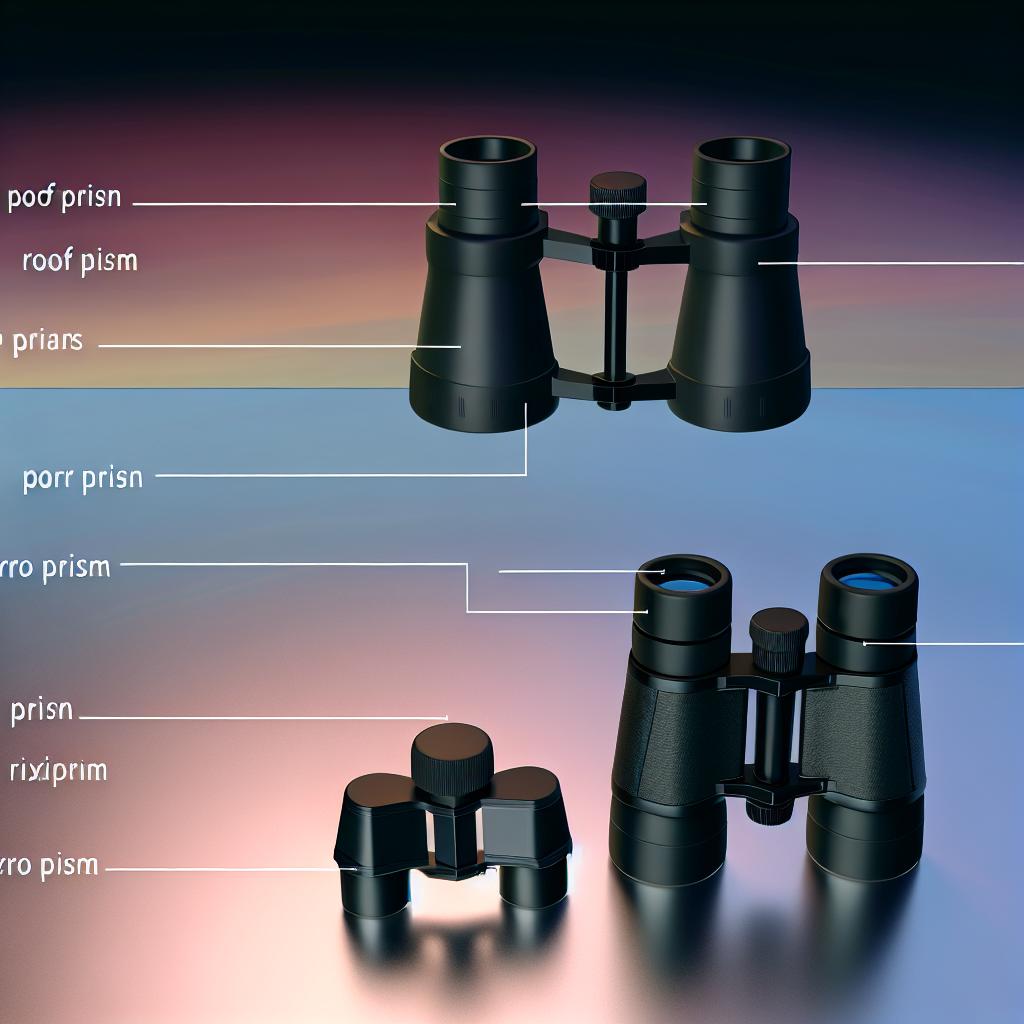Understanding the Distinction Between Roof Prism and Porro Prism Binoculars
When selecting binoculars, the choice between roof prism and Porro prism models plays a vital role in ensuring that you have the best possible viewing experience. Each type of binoculars serves distinct needs and comes with its own advantages. Becoming familiar with these distinctions helps guide your purchasing decision towards equipment that perfectly aligns with your requirements.
Design and Structure
The design and optical construction are the most apparent differences between roof prism and Porro prism binoculars. Roof prism binoculars are characterized by a streamlined, straight-barrel design. This compact and lightweight design enhances portability, making them especially attractive for users who anticipate long periods of use or need to carry the binoculars over extended distances. The alignment of the components in a straight line is both a defining characteristic and a practical advantage when compactness and weight savings are priorities.
In contrast, Porro prism binoculars feature a more distinctive, doglegged shape. This results from the design that incorporates internally offset prisms, imparting a characteristic appearance that is easily recognizable. Despite being bulkier than their roof prism counterparts, Porro prism binoculars often provide a natural and ergonomic hand fit, which can make them easier to hold steady over extended periods, adding comfort alongside quality viewing.
Optical Performance
The optical performance of roof prism and Porro prism binoculars differs, necessitating consideration during selection. Porro prism binoculars typically present a wider field of view. This characteristic is particularly beneficial for activities such as bird watching or observing sports events where capturing a broader scene enhances the viewing experience. Additionally, Porro prism binoculars generally provide superior depth perception and deliver a three-dimensional image representation owing to their optical path design.
Conversely, roof prism binoculars are valued for their more precise optical alignment. While they may offer a narrower field of view, this precise alignment often contributes to producing sharper and brighter images. The manufacturing process for roof prisms demands stringent tolerances, potentially elevating the cost but enhancing performance especially in low-light conditions, an important consideration for enthusiastic outdoorsmen and professional observers.
Durability and Adjustments
The durability of binoculars and the ease with which they can be adjusted are important considerations. Roof prism binoculars are renowned for their structural durability. The straight-through design not only underpins their robustness but also supports advanced weatherproofing measures. Such binoculars are typically waterproof and fog-proof, characteristics that heighten their appeal for outdoor enthusiasts and those who venture into challenging environmental conditions.
On the other hand, while Porro prism binoculars are designed to endure a range of weather conditions, their inherent complexity involving offset prisms can lead to a higher susceptibility to misalignment. This makes it critical for users to handle them carefully, and it may necessitate periodic adjustments to maintain optimal performance. Such factors are key when considering long-term investments in binoculars and ongoing maintenance.
Cost Considerations
The difference in cost between these two binocular types is another important factor. Porro prism binoculars generally incur a lower manufacturing cost, a saving often passed on to consumers in the form of more affordable retail prices. For beginners or budget-conscious users who still seek excellent performance, Porro prism binoculars provide an attractive balance between cost and quality, thus making them a sensible choice.
Meanwhile, roof prism binoculars are often priced higher due to their intricate manufacturing process and advanced design. While the initial expenditure may seem significant, the investment is rationalized through superior durability and enhanced features that cater to committed hobbyists and professionals who depend on their equipment regularly, highlighting their long-term value for serious users aiming for a reliable and efficient viewing tool.
Practical Applications and User Preferences
Understanding how these binocular types align with different practical applications can further assist in making a decision. For users focused on portability and weather resistance, such as hikers and adventurers who require gear that withstands the elements, roof prism binoculars prove indispensable. Their structure lends itself well to robust handling and adaptability in varying weather conditions.
In terms of performance, Porro prism binoculars shine in scenarios demanding a broader field of vision. Wildlife enthusiasts and sports observers often prioritize such features to maximize immersion in wide landscapes or bustling events, where expansive views are crucial. Additionally, the enhanced depth perception offered by Porro prisms significantly enriches observation experiences that benefit from a three-dimensional clarity.
Innovations and Technological Advances
Recent advancements in optics technology continue to blur the lines between roof and Porro prism binoculars. Modern techniques in lens coating and light management have made it possible for higher-quality images to be produced from both types, even in circumstances that historically favored one over the other. Continuous improvements mean that newer models across both categories can offer enhanced viewing experiences, reducing traditional drawbacks.
Manufacturers are also increasingly focusing on ergonomic designs, ensuring that both types of binoculars now provide better comfort even during prolonged use. The shift towards user-centric designs indicates a growing anticipation of diverse consumer needs, pushing the evolution of binoculars toward versatile, high-performance tools suited for any outdoor activity.
Final Thoughts on Selection Criteria
The decision to choose between roof prism and Porro prism binoculars ultimately centers on individual priorities, budget constraints, and specific uses. For those emphasizing a compact design and durability, roof prism binoculars may emerge as the preferred choice, an ideal companion for dynamic and demanding environments. Alternatively, when cost-effectiveness and wider field of views take precedence, Porro prism binoculars offer a suitable option that delivers on these fronts without sacrificing essential performance.
A thorough appreciation of each type’s strengths and potential limitations can guide prospective buyers toward selections that align seamlessly with their expectations and the demands of their particular pursuits, ensuring satisfaction in the long-term use of these sophisticated optical instruments.
This article was last updated on: May 10, 2025


